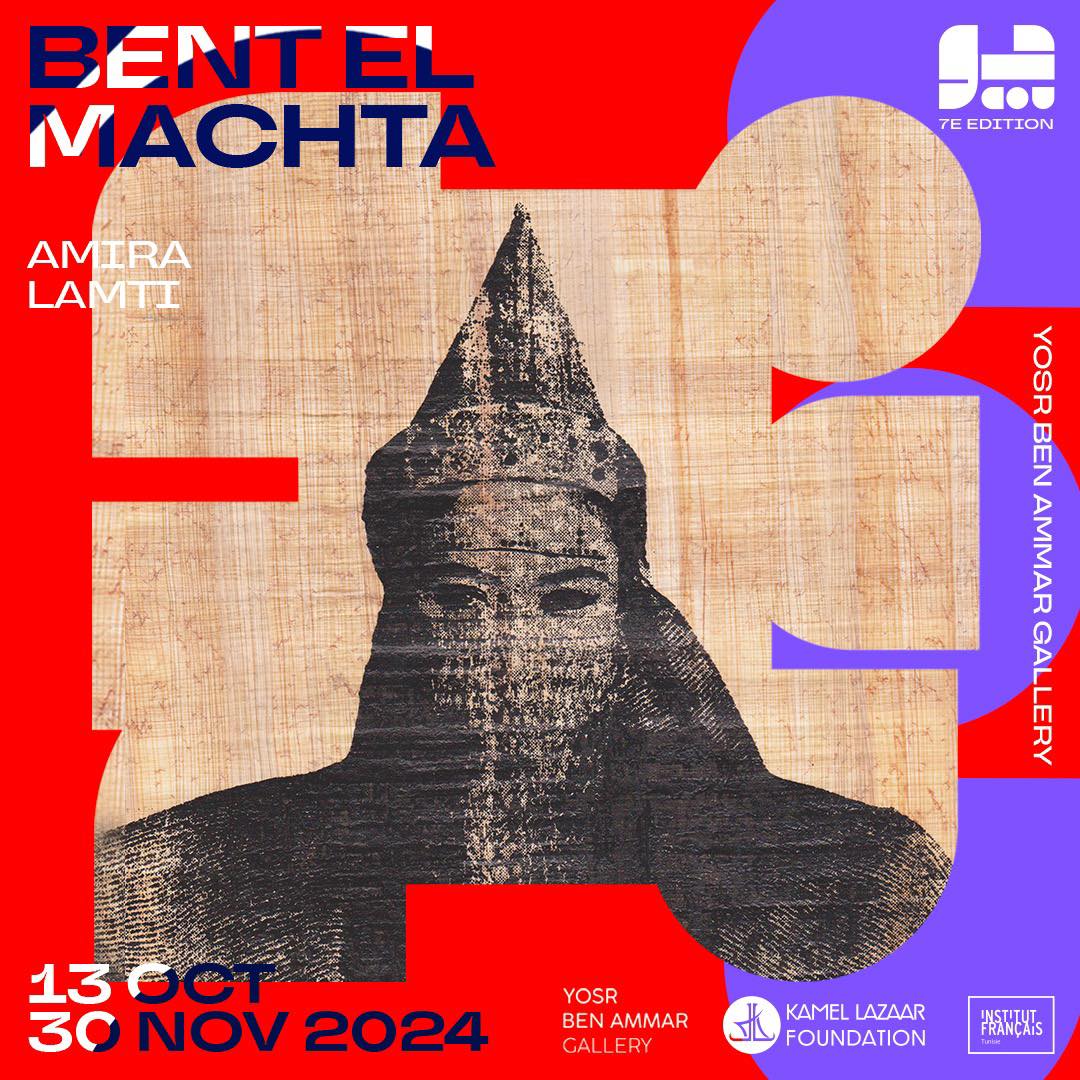BENT EL MACHTA, DAUGHTER OF THE MACHTA (2024)
Rituals are grounded in recurring acts of passage and transformation, bringing the past into the present and the ancient into the contemporary. Rituals have fluidity; they not only honor tradition but also redefine it, allowing cultural expressions to transcend time and space.
In Tunisian culture, El Machta refers to the woman who guides the bride through the Jeloua, a pre-wedding ritual making her transition into marriage. As a guardian of tradition, El Machta ensures the proper observance of this ancestral practice.
In this exhibition, the bride’s ritual, draped in gold and jewels, takes center stage as a symbolic reenactment of ancient rites. Guided by the Machta, the bride performs sacred gestures—arms extended, palms open, and turning seven times—channeling the power of the goddess Tanit to invoke blessings for union and fertility. This reflects not only submission to divine forces but also an alignment with the cyclical rhythms of life, nature, and the cosmos. Wedding rituals shape identity, affirm cultural continuity, and celebrate love in its most communal and sacred forms.
Bent el Machta is not just about one woman, but a lineage of women to whom this practice has been passed down—a transmission of gestures, beliefs, chants, garments, prayers, and intentions. Lamti’s artworks engage with these social, divinatory, and cyclical rituals.
For artist Amira Lamti, it felt natural to juxtapose textiles with video archives, artifacts, and photographs, reviving garments alongside footage of her grandmother, El Machta. The past is not merely distant—it exists in the present. Bent El Machta honors both tradition and Lamti’s contemporary expression, exploring the layers of meaning in matrimonial rites, where sacred gestures become conduits between individual experience and collective heritage.
‘وحين مالت بشروا الخلق بيها’
— And when she swayed, they brought good news to all the people with her.
Text by Sarah Ben Hafsia

